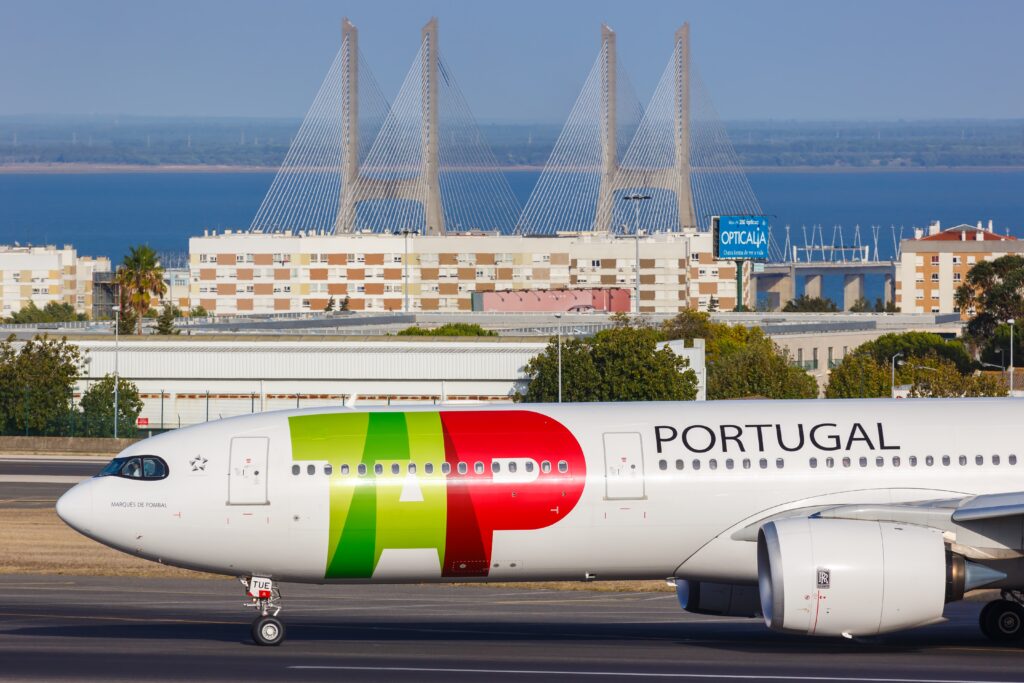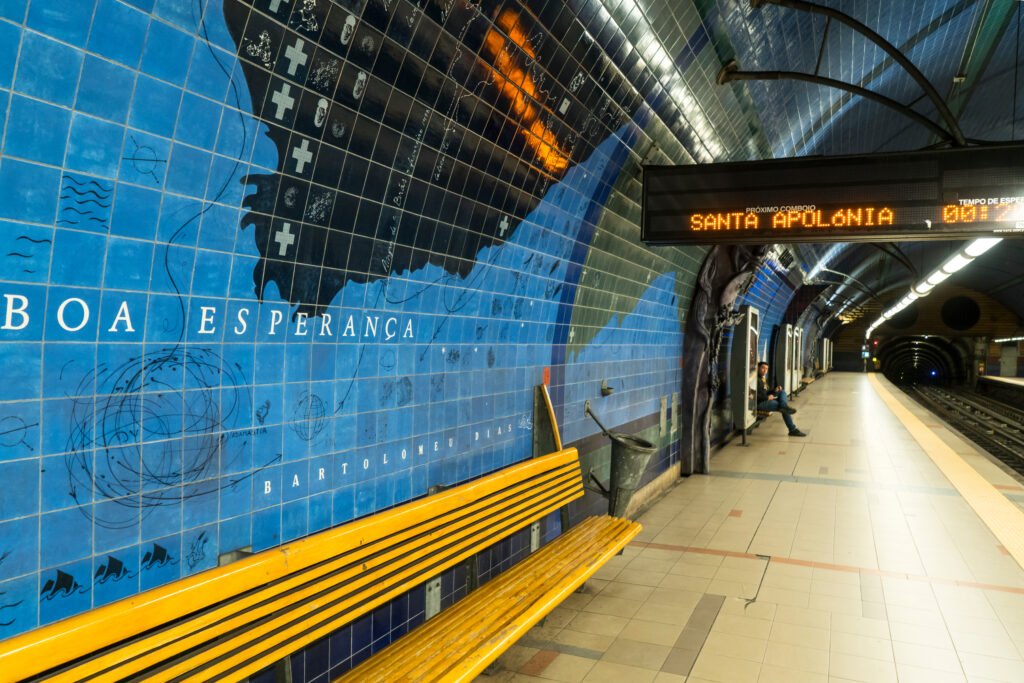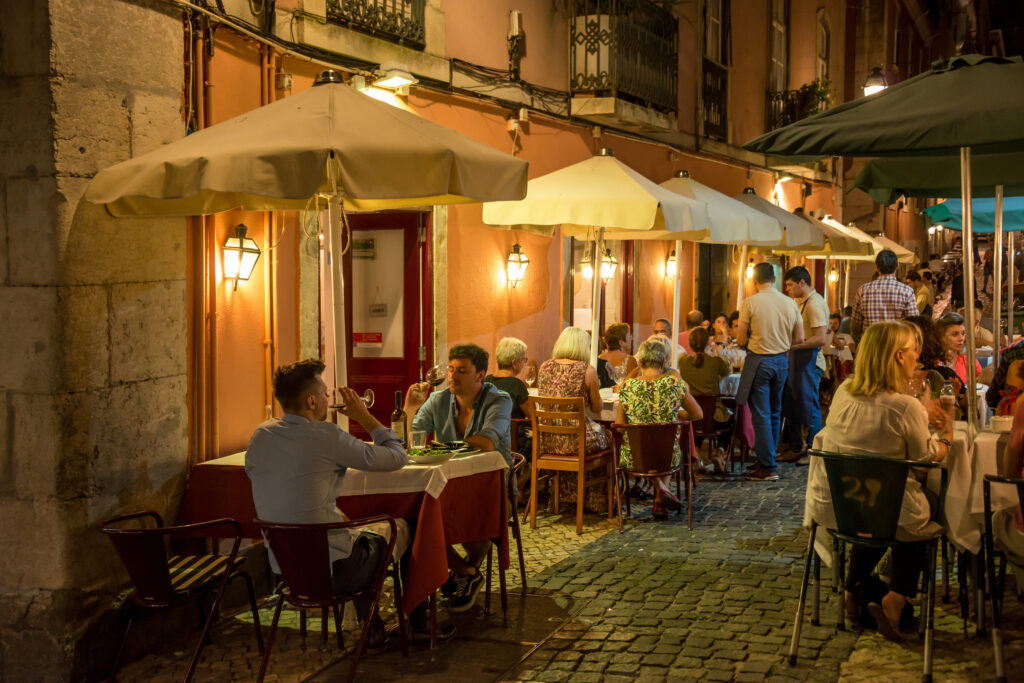
LISBON: THE LAUNCH
Lisbon is the sunniest capital city in Europe. You can expect bright sun and clear skies over 300 days per year. This means that even the dregs of winter can be punctuated with sunny afternoons. But, it also means LOTS of people are finding their way over to Lisbon for a double dose of culture and warmth. This quick guide will help launch your trip.
Get to / Get Around Lisbon
Bem vindo a Lisboa! You have all the usual options to get from the airport to the center of Lisbon and beyond. Our ultimate recommendation is to hire an airport transfer because the value and convenience is compelling. Busses and Metro can be easily navigated around town once you’re settled.
Airport Transfer: If you are arriving with excessive luggage (or excessively travel weary family members) we strongly encourage hiring a so-called airport transfer, which is essentially a pre-arranged for-hire car. There are limitations to the Metro and bus from the airport that may not be ideal for a traveling family, so don’t overthink it.
Executive4U offers van services that can be ordered ahead of time online. Airport transfers can usually get you to the primary central areas of Lisbon in about half an hour, and can often cost less than €40. There’s also the comfort of knowing somebody will be waiting for you at arrivals with a little sign with your name on it. The range for an airport transfer is unlimited. You could hire a ride all the way to Porto if you so desired.

Of note, Executive4U does not charge for car seats, as long as you prearrange them.
In general, unless you’re renting a car or planning on taking lots of Ubers, you should avoid bringing car seats to Portugal. They will seriously cramp your hotel room or mobility around town. And, other than the ride back to the airport via airport transfer, you shouldn’t need a car seat for your time in and around Lisbon.
Taxi & Uber: Taxis and Uber (as well as other ride-sharing apps like Bolt) are less expensive than airport transfers, but may not be able to accommodate your entire family with gear in a single carload. The taxi line is clearly marked upon arrival. Ubers and the like are a little trickier to find (and your app’s GPS may even lead you astray!) because you have to go to Terminal 1’s departure area. Taxis park in obvious, designated areas around town to be hailed.
Metro: Lisbon’s Metro system is clean, safe and rides cost about €1.50. The stations double as public art galleries for wonderful tile works and large scale installations. The seats on some Metro trains are padded with cork!

For purposes of arriving at Aeroporto Humberto Delgado, please note that the Metro station is outside Terminal 1. There is a free airport shuttle service between Terminal 1 and Terminal 2 every 10 minutes.
How far do you really need to go? Sometimes it’s easier to walk the distance between Metro stations if you’re only going 1 or 2 stops away because you have to account for depth. The Metro tracks at Baixa-Chiado, for example, are below sea level, but access above ground is 150 meters up a hill. Stairs or even the updated escalators can take 10 or more minutes to negotiate before you even get to/from the train platform.
Bus and Elétrico: Elétrico is the technical term for a trolley or tram, both of which travel around tracks in the road, powered by overhead electrical wires. These routes are designated by an ‘E’ predicating the route number (#28E being the most famous). Sometimes a bus will run the route of an elétrico (just a heads up when an #15E bus pulls up to take you to Belém). Busses and elétricos are safe and easy to navigate on Google maps on your phone.
Protocol on buses and trolleys is to board near the driver and exit in the back. You can buy a ticket directly from the driver for €2, but don’t expect any change. For the longer snake-like trams, enter any door and have machines onboard to pay for your fare. In all cases, you’re best off loading a Viva Viagem prepaid card at any Metro station. Each person needs his or her own card. Kids under 3 (accompanied by an adult) are free.
The Lisboa Card
Once activated, this card allows you to see up to 38 attractions and unlimited transportation in 24, 48 or 72 hour blocks of time. The clock on the Lisboa Card begins upon first use, so it can save you money if you have an aggressive itinerary.
Dining in Lisbon
Lisbon has a diverse and vibrant food scene. That is to say, you can probably find any cuisine you’re in the mood for if you look hard enough. If there are restaurants that you have researched ahead of time, it is a good idea to obtain reservations. The most popular spots can book out weeks and months ahead. If you’re trying to avoid tourist traps, the most touristy places are in Chiado and Bairro Alto so they deserve the most scrutiny when considering.
The Portuguese like a particular kind of restaurant, so you will notice plenty of vegetable soups, seafood (especially cod) and braised meats on menus. Note: when you sit down at a traditional restaurant, the server will set down bread or olives or some other little snack that you didn’t order. It’s called a couvert and you have the right to refuse it – otherwise you pay for it! It’s not a scam and there’s no hard feelings for refusing it. Couvert is compulsory, just something they do. Another thing they do – order a prego steak sandwich for dessert after a big seafood meal.

High chairs and booster seats are not automatically available at most restaurants. So, have a portable option or inquire ahead.
Breakfast is the lightest meal of the day. If your hotel doesn’t offer a breakfast buffet, there is an abundance of pastry and coffee shops. There is also a growing trend of brunch-focused restaurants, for something more substantial. Lunchtime for locals starts at 1:00 pm. Dinner is not until 8:00 pm+. If you want an advantage for walk-in situations at restaurants, you will want to be on the early side of those times.
We have a simple restaurant rating system at EFTF. If we had a good experience at a particular restaurant, we’ll mention it in the hopes you might like it too!
What Neighborhood to Stay in?
If we told you once, we told you a thousand times: Lisbon is hilly!
This fact enhances its charm, but also affects some practicalities for moving around the city. ‘Near’ is a relative concept in Lisbon. You could be one street away from something, yet need to climb 50 meters of elevation!
Topography should be considered when making your choice of hotel or rental property. When looking at a map, keep in mind that everything along the Tagus River is essentially sea level. That ‘ground floor’ continues as a spine that emanates from Praça do Comércio through Rossio and Avenida da Liberdade. Just about everything else is up or down a hill.
That being said, we recommend being adjacent to the main tourist, party and commercial centers of Lisbon.
Príncipe Real: This is the sophisticated, quieter older neighbor of Bairro Alto. There are several impressive parks that enforce the idea that this is a relaxed and calm neighborhood. A fifteen-minute walk puts you squarely back in the fold of the main tourist areas. Meanwhile, in Príncipe Real, enjoy urbane shopping, leisurely coffee or dining options most other tourists will never see. It’s the kind of neighborhood that might give you a sense of what it would REALLY feel like to live in Lisbon – with kids.